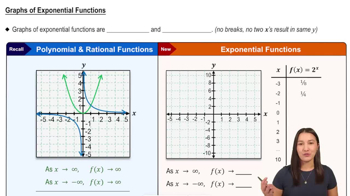For any real number x, the floor function (or greatest integer function) ⌊x⌋ is the greatest integer less than or equal to x (see figure).
a. Compute lim x→−1^− ⌊x⌋, lim x→−1^+ ⌊x⌋,lim x→2^− ⌊x⌋, and lim x→2^+ ⌊x⌋.
 Verified step by step guidance
Verified step by step guidance Verified video answer for a similar problem:
Verified video answer for a similar problem:



 6:47m
6:47mMaster Finding Limits Numerically and Graphically with a bite sized video explanation from Patrick
Start learning